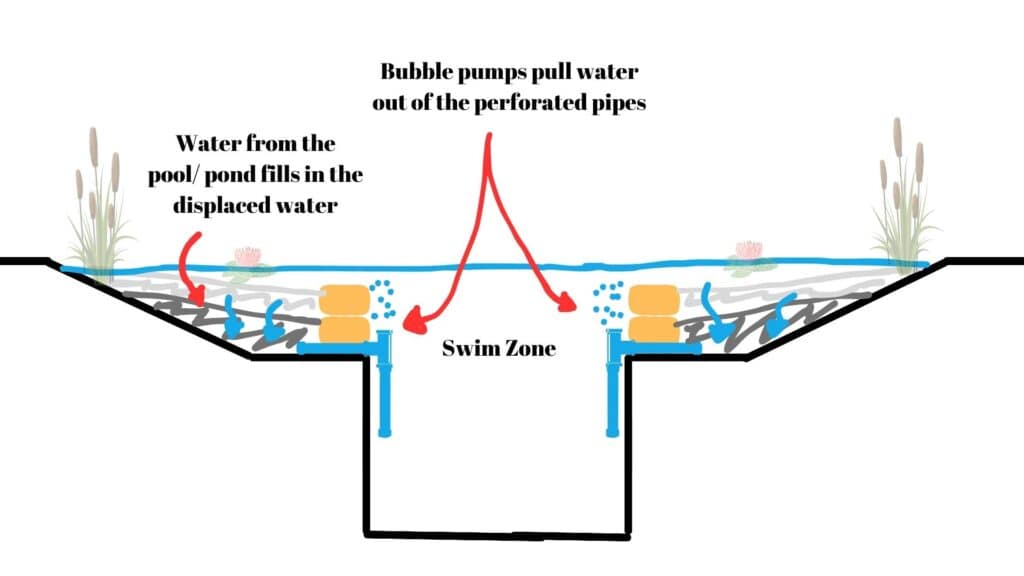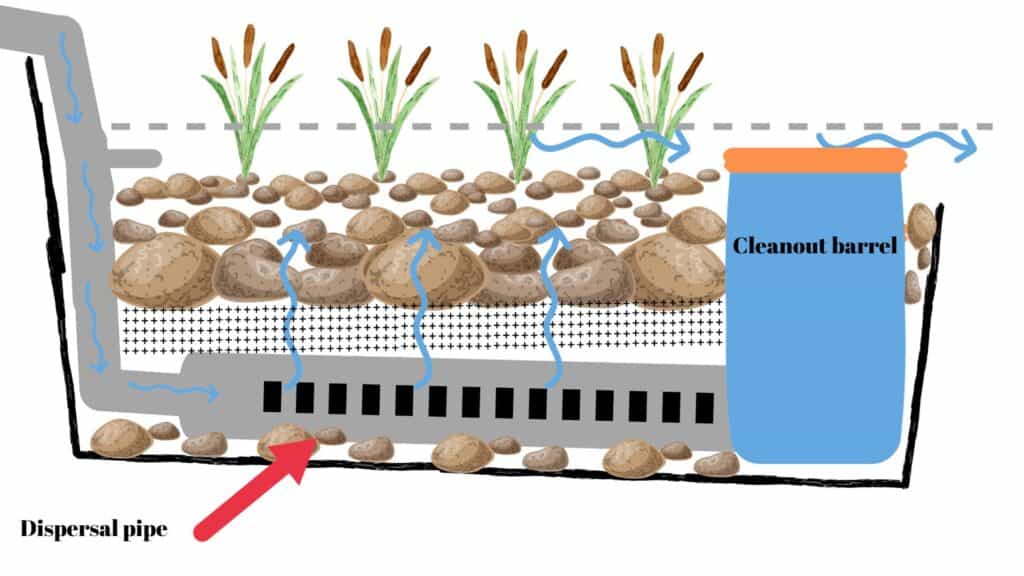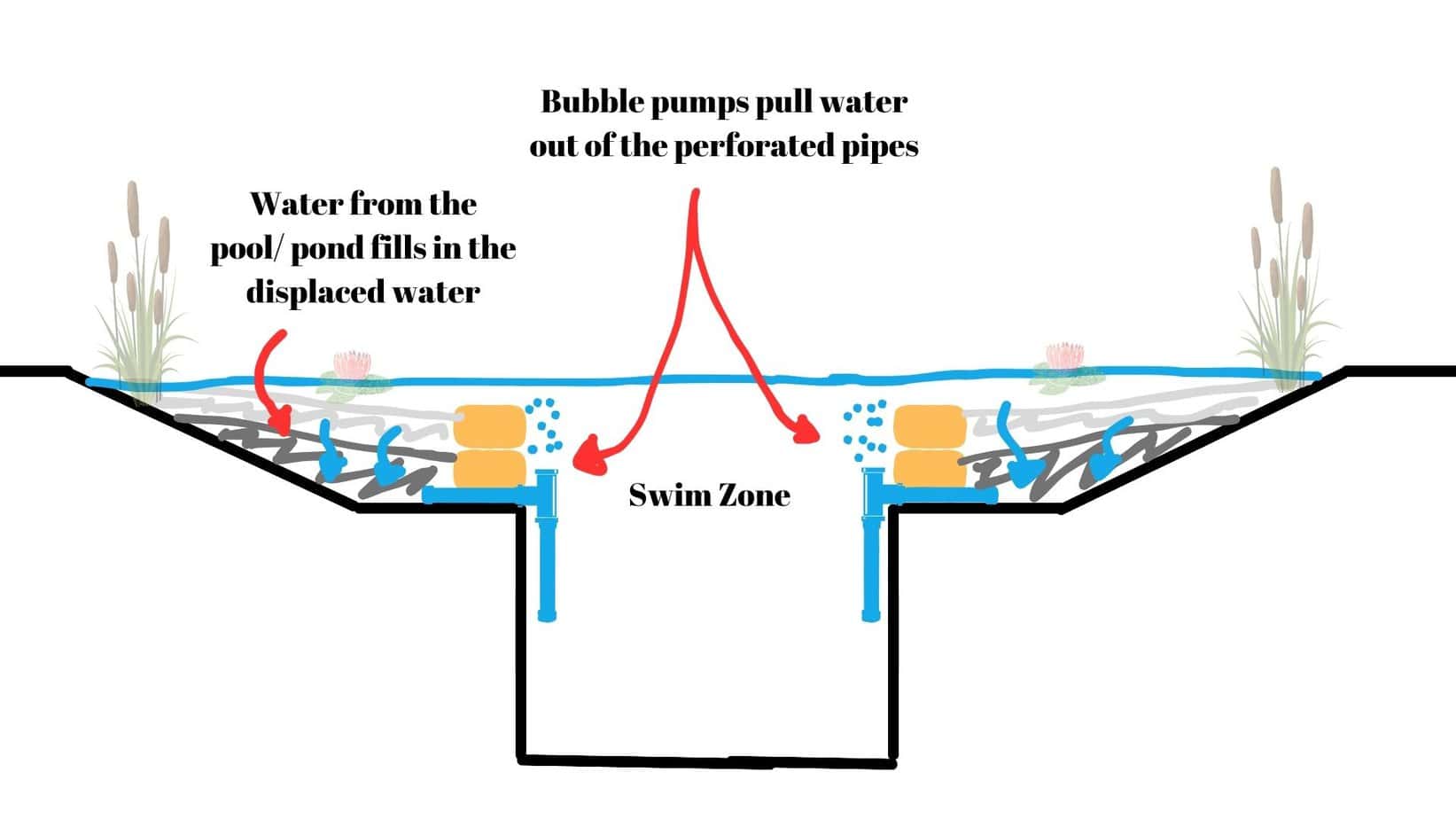I recently had an interesting question come my way:
“why do I recommend moving the water in a bog filter from the bottom to the top rather than the other way around?”
It’s a valid question and something I’ve pondered myself. So, in this blog post or if you prefer video, I’m going to delve into different examples of both upflow and downflow systems and explain why I ultimately prefer the upflow bog filter for ponds.
Understanding Biological Filtration
First off, it’s important to note that both upflow and downflow systems work. In essence, all biological filters aim to move water through media colonized by beneficial bacteria.
If you’re unfamiliar with how these bacteria keep water clean, clear, and healthy, Here’s a helpful article I wrote (maintaining a crystal clear garden pond) or check out this video.
Comparing Downflow and Upflow Systems
Let’s start by looking at the downflow system used in natural swim ponds, which you can find in great detail on David Pagan Butler’s YouTube channel.
In David’s natural swim ponds, the bog zone can be 50% to 100% the area of the swim zone or open water area. David calls his filter a regeneration zone.
The filters utilise bubble pumps to pull the water down through the rock, pebble and plant roots to purify it.

Then, there’s the upflow Wetland system, commonly featured on the Aquascape Pond channels on YouTube.
This one pumps water into the base of the filter, which is, also filled with rock, pebble and plants. Now the water is forced up through the filter and then it returns via gravity back into the pond.
Both systems serve the same purpose of moving water through media colonized by plants and bacteria.

Different size requirements
Apart from the up flow, down flow difference, the first significant difference is the size of the bog or filter zone.
In natural swim ponds, the bog zone or regeneration zone can be 50% to 100% the area of the swim zone or open water area.
In Aquascape’s recreation ponds, which are essentially natural swimming ponds, the wetland filter zone is typically 15% to 30% of the total pond area, with 30% being more common. This means that the upflow system allows for a smaller footprint in terms of the overall pond size.
Cleaning and Flushing Considerations
One argument in favor of a downflow system is that it should require less cleaning or flushing, as the material can’t easily penetrate through the media.
While this is a valid point, I have concerns that as the media becomes clogged with organic materials, water might simply find an easier route, which could lead to incomplete filtration.
To flush the system I would also need to empty the majority of the pond as the filter is inside the pond.
On the other hand, an upflow system operates under pressure, and it’s designed to be cleaned and flushed as needed. Because there filter is usually seperate to the pond it can be cleaned without emptying the entire pond.
In my experiments, the flow of water through the upflow filter appears more uniform, which makes me confident that the water is moving through the entire filter.
To illustrate this concept, think of filling a glass of water. If you start from the bottom, you know that new water rises to the top. But if you initially fill the glass from the top, once it’s full, the new water might just take the path of least resistance and overflow the cup.
At least that’s my thinking, I could be completely wrong.
Conclusion: Find Your Filtration Style
I personally prefer the upflow bog filter because it consistently delivers the results I’m looking for. So I’ve never decided to change.
But here’s the key takeaway: find a style and method that resonate with you and your pond. Experiment, start small if you’re new to water filtration, and build a base of knowledge. You can always adapt and try different methods as you gain experience.
A Budget-Friendly Reminder
The bubble pumps running the down flow filter can be quite economical and that was previously a very valid reason to chose that type of system, also a big plus is electrical components inside the water.
These days pond pumps are incredibly efficient and can displace just as much water if not more for the same amount of energy expenditure. If you are interested I have a link to the pumps I like to use in my ponds over on the products page.
Remember, filtering water doesn’t have to break the bank. The processes are natural, and you don’t need expensive components. So, go ahead, explore, and enjoy the journey of creating a beautiful and healthy pond.
Thanks for reading, and if you’ve made it this far, well done! Feel free to check out my other articles and videos for ways to save money while building and maintaining ponds.

